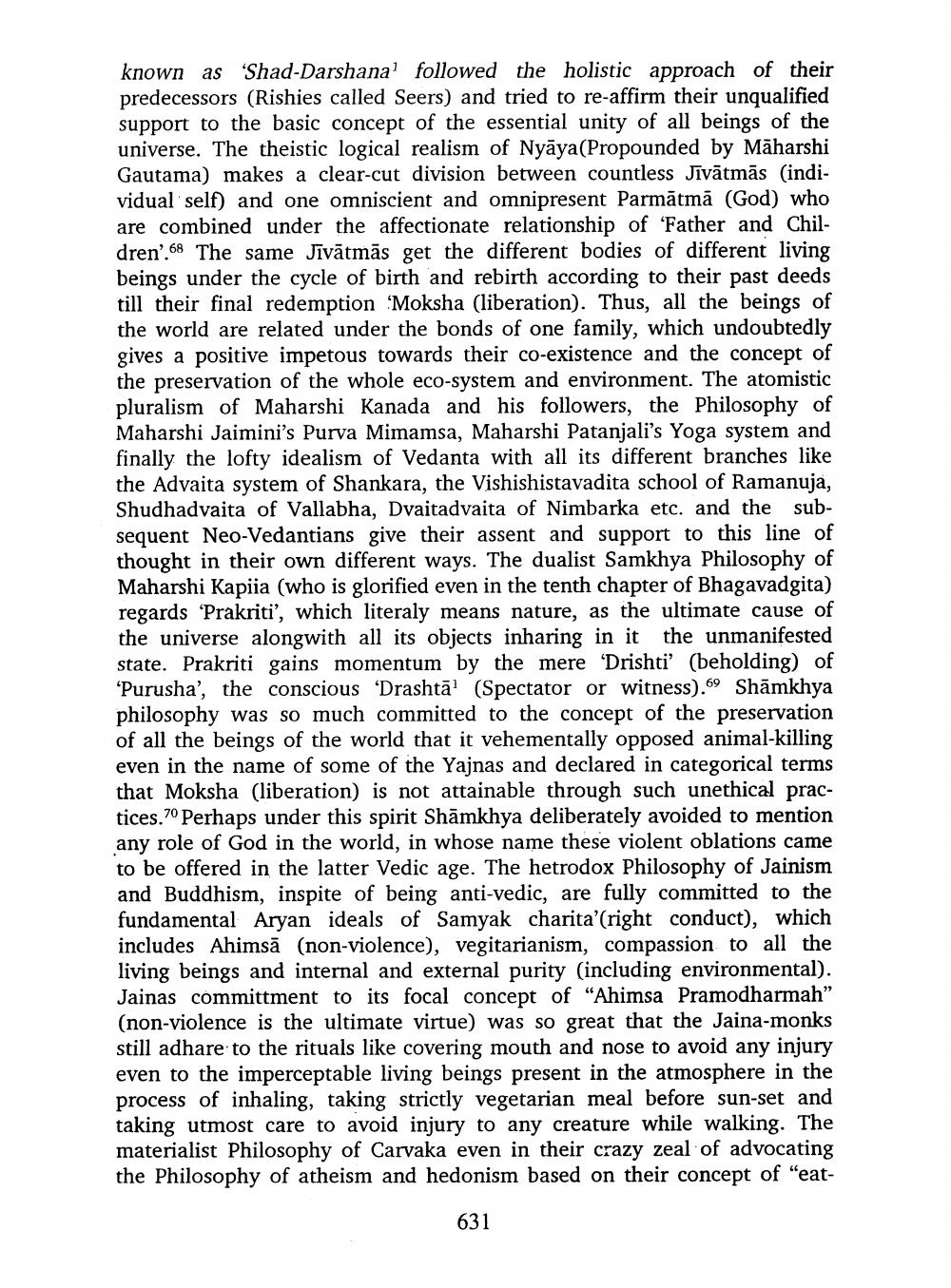________________
known as 'Shad-Darshana? followed the holistic approach of their predecessors (Rishies called Seers) and tried to re-affirm their unqualified support to the basic concept of the essential unity of all beings of the universe. The theistic logical realism of Nyāya(Propounded by Māharshi Gautama) makes a clear-cut division between countless Jivātmās (individual self) and one omniscient and omnipresent Parmātmā (God) who are combined under the affectionate relationship of "Father and Children'.68 The same Jivātmās get the different bodies of different living beings under the cycle of birth and rebirth according to their past deeds till their final redemption Moksha (liberation). Thus, all the beings of the world are related under the bonds of one family, which undoubtedly gives a positive impetous towards their co-existence and the concept of the preservation of the whole eco-system and environment. The atomistic pluralism of Maharshi Kanada and his followers, the Philosophy of Maharshi Jaimini's Purva Mimamsa, Maharshi Patanjali's Yoga system and finally the lofty idealism of Vedanta with all its different branches like the Advaita system of Shankara, the Vishishistavadita school of Ramanuja, Shudhadvaita of Vallabha, Dvaitadvaita of Nimbarka etc. and the subsequent Neo-Vedantians give their assent and support to this line of thought in their own different ways. The dualist Samkhya Philosophy of Maharshi Kapiia (who is glorified even in the tenth chapter of Bhagavadgita) regards Prakriti', which literaly means nature, as the ultimate cause of the universe alongwith all its objects inharing in it the unmanifested state. Prakriti gains momentum by the mere 'Drishti' (beholding) of 'Purusha', the conscious 'Drashtā? (Spectator or witness).69 Shāmkhya philosophy was so much committed to the concept of the preservation of all the beings of the world that it vehementally opposed animal-killing even in the name of some of the Yajnas and declared in categorical terms that Moksha (liberation) is not attainable through such unethical practices.70 Perhaps under this spirit Shāmkhya deliberately avoided to mention any role of God in the world, in whose name these violent oblations came to be offered in the latter Vedic age. The hetrodox Philosophy of Jainism and Buddhism, inspite of being anti-vedic, are fully committed to the fundamental Aryan ideals of Samyak charita'(right conduct), which includes Ahimsā (non-violence), vegitarianism, compassion to all the living beings and internal and external purity (including environmental). Jainas committment to its focal concept of "Ahimsa Pramodharmah” (non-violence is the ultimate virtue) was so great that the Jaina-monks still adhare to the rituals like covering mouth and nose to avoid any injury even to the imperceptable living beings present in the atmosphere in the process of inhaling, taking strictly vegetarian meal before sun-set and taking utmost care to avoid injury to any creature while walking. The materialist Philosophy of Carvaka even in their crazy zeal of advocating the Philosophy of atheism and hedonism based on their concept of “eat
631




